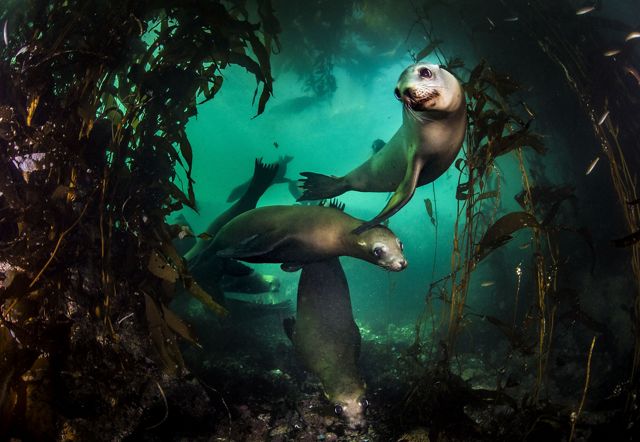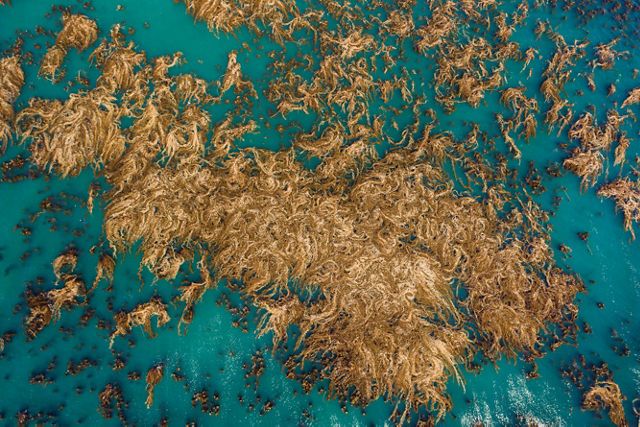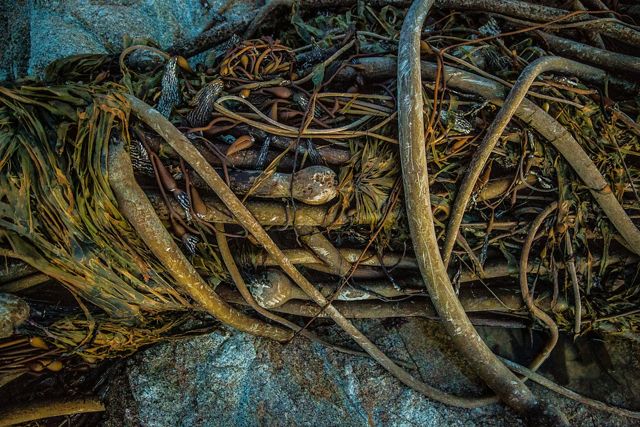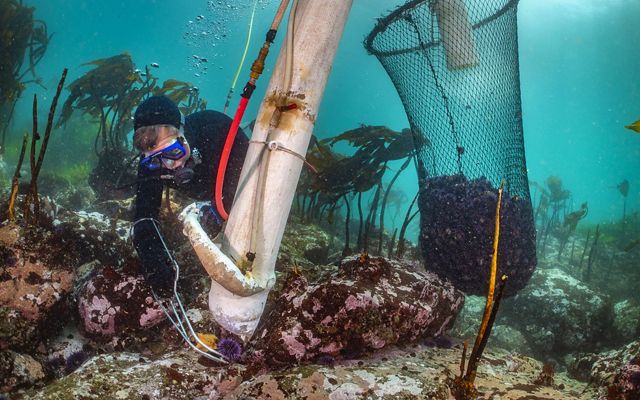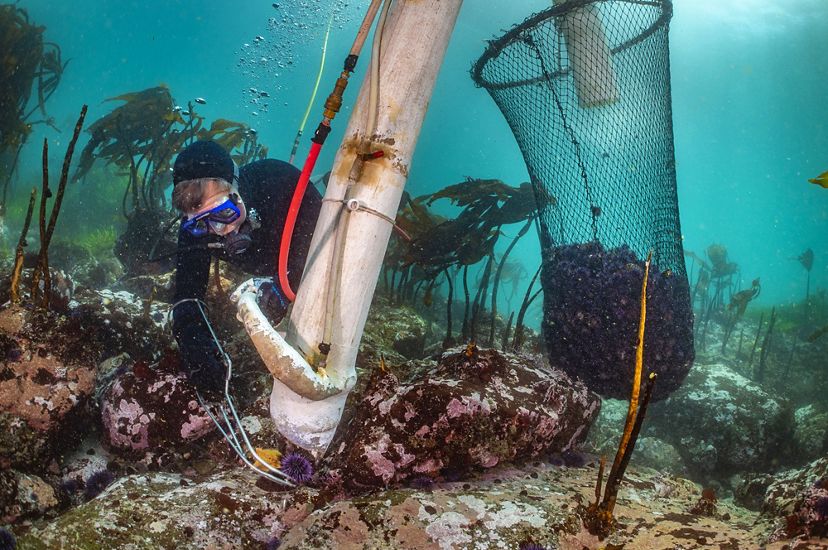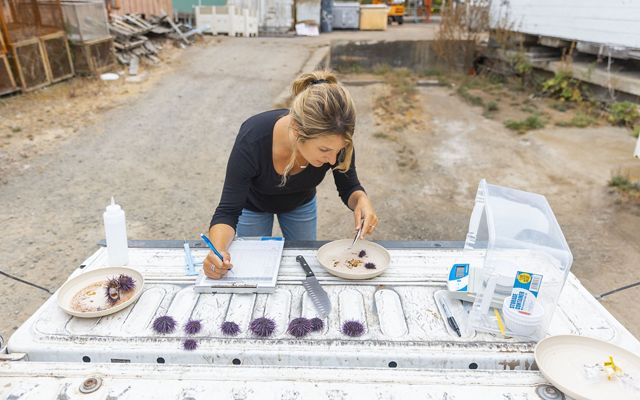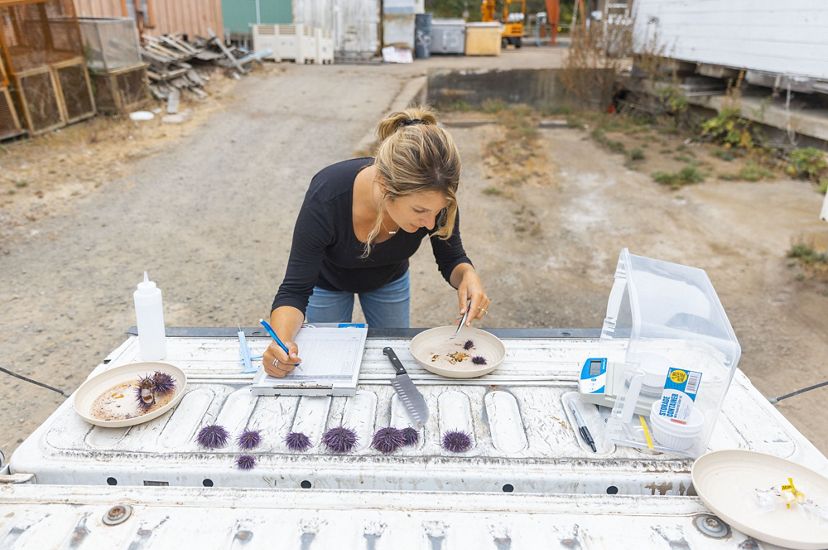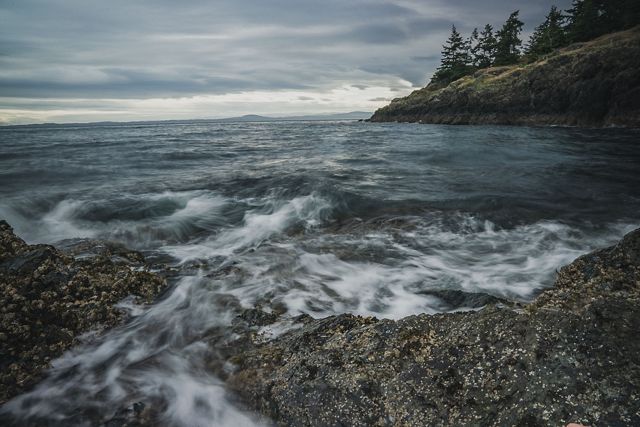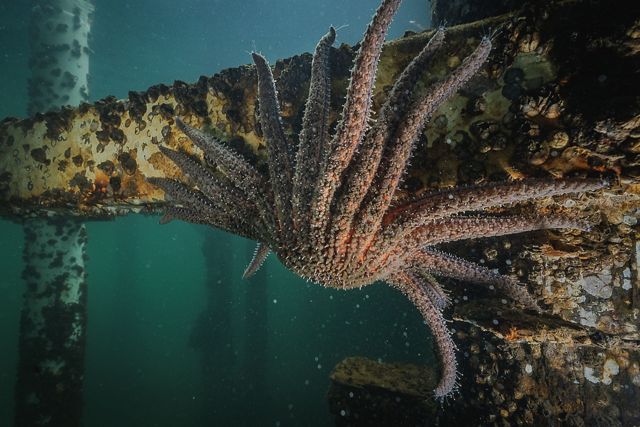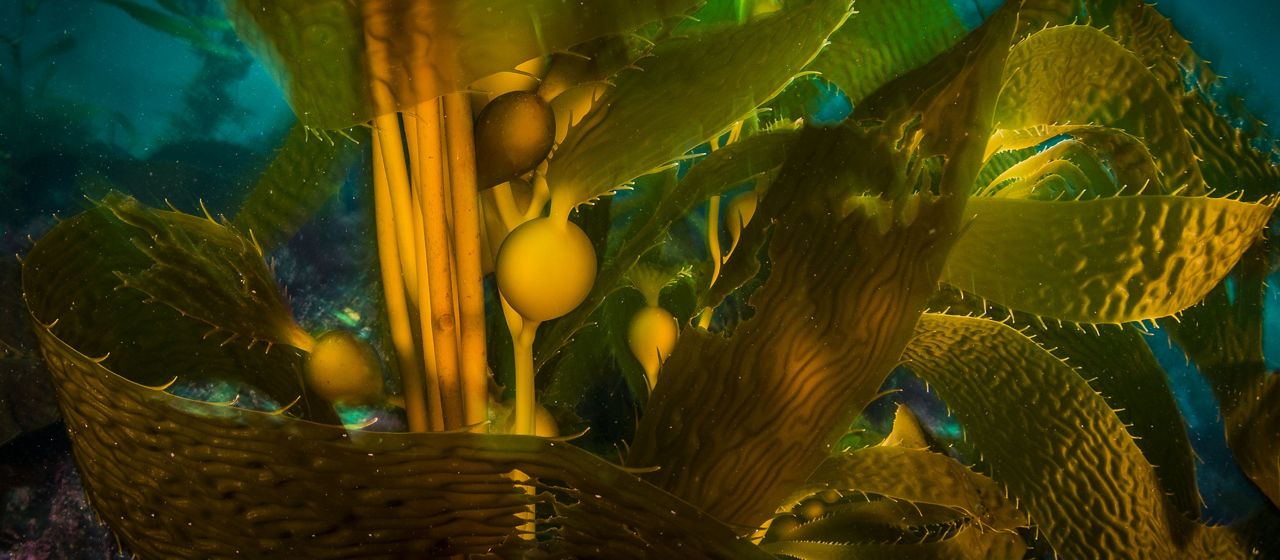
Underwater Forest Kelp forests are one of the most biodiverse ecosystems on Earth. © Ralph Pace
From the rocky bluffs of Mendocino Headlands State Park, California’s North Coast appears almost postcard perfect: A salty breeze tempers the blazing sun, the sapphire sea crashes and swirls against the shoreline, and a golden retriever gallops toward the surf.
But beneath the waves, something is wrong.
Kelp forests as lush and impressive as the towering redwoods that grow farther inland once dominated these nearshore waters. A type of seaweed, kelp attaches to rocky surfaces on the ocean floor and, like trees and terrestrial plants, grows upward toward the sunlight. In fact, some experts call it “the sequoia of the sea.” It’s an appropriate nickname: Stems of bull kelp (the dominant species north of Santa Cruz County) can soar more than 100 feet high, and its canopies—the frond-like blades that tangle on the ocean surface—are visible from space.
In satellite images, kelp canopies look like dark splotches, but they represent vibrant underwater ecosystems that provide food and shelter for thousands of marine species, including fish and a raw bar’s-worth of shrimp, lobster, urchin and abalone. Because of this bounty, kelp also provides fertile and critical hunting grounds for mollusk-and-crustacean-loving seals and sea otters.
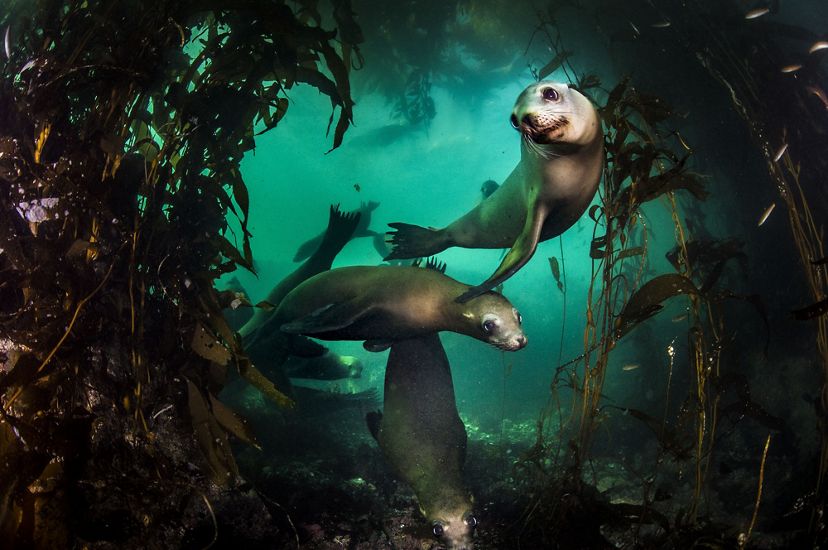
“Kelp is both an organism and a habitat,” says Norah Eddy, associate director of The Nature Conservancy’s oceans program in California. “It provides this incredible three-dimensional structure through the water column that supports an immense amount of biodiversity.”
And the benefits don’t stop there. Kelp forests temporarily store a staggering amount of carbon—approximately 20 times more per acre than forests on land—which helps temper ocean acidification in coastal waters, a symptom of climate change. The seaweed also pumps more than $250 million into the state’s economy each year by way of commercial fishing, recreational diving, wastewater treatment and more.
In temperate oceans across the globe, kelp forests are in decline because of warming waters, overharvesting and overgrazing by local predators, but they’re on the verge of collapse in Northern California, where only a few strongholds remain. Through ongoing surveys using satellite, drone and piloted aircraft imagery, TNC has found that in the past 10 years, 96% of kelp forests in the region have disappeared. It’s an ecological disaster: From San Francisco to Oregon, nearly all that remains of one of the most productive ecosystems on Earth is an underwater wasteland—and exploding populations of spiny sea creatures with a taste for brown algae are a big part of the problem.
Hordes of native purple urchins are devouring kelp faster than it can reproduce. They eat the blades. They eat the stems. They even gnaw right through the plant’s base—
causing it to detach from the sea floor, float away and die. And if any newly sprouting spores should appear, urchins will chomp them before they have a chance to grow. Eddy has been crunching the numbers on the catastrophe and, as a diver, has witnessed it firsthand. “It’s like seeing a forest that’s been clear-cut,” she says. “It’s that shocking.”
Since 2019, TNC has been working up and down the West Coast to triage the problem—a tall order, given that the scale of this loss is unprecedented, and working in rough, shivering-cold seas for hours is logistically and physically challenging. And while restoring terrestrial plants and animals is no easy task, species such as the gray wolf, bald eagle and Eggert’s sunflower have all been pulled back from the brink. But there is no blueprint for recovering marine habitat. Still, TNC is diving in, literally, to not only understand kelp and its collapse, but also to bet on pioneering science to reset and restore the ecosystem in hopes of securing a future for this fading forest.
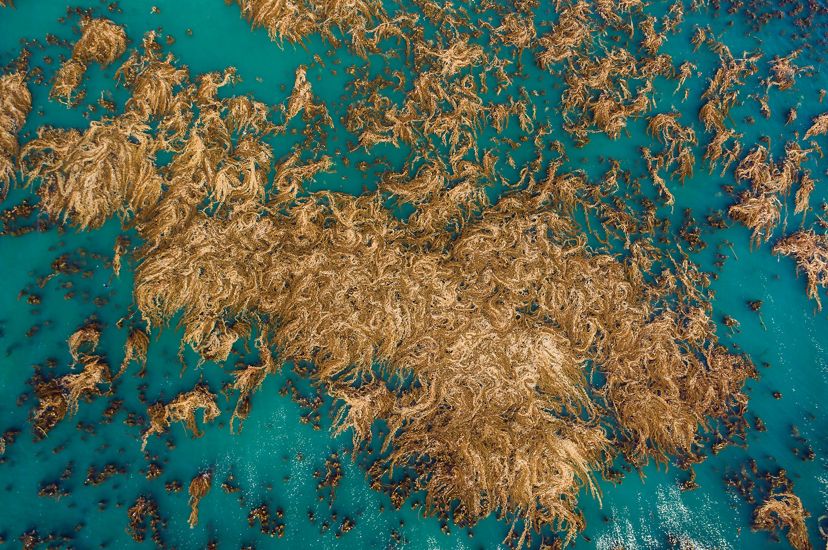
It Began with a Blob
In 2013, a massive heat wave began to envelop the eastern Pacific, from Mexico to Alaska. Often referred to as “the blob,” this warming event raised the ocean temperature by as much as 7 degrees Fahrenheit, triggering a slow cascade of underwater turmoil. The balmier conditions wreaked havoc on Northern California’s bull kelp, which thrives in the region’s typically cold and nutrient-rich waters. As kelp forests began to struggle, so, too, did the animals—and livelihoods—that depend on them. Purple urchins normally hide out in rocky crevices and passively eat whatever kelp drifts by. But during this period, they began actively seeking out and gobbling up whatever kelp they could find. This brazen behavior put a strain on other kelp-reliant species and contributed to the collapse of the locally lucrative red urchin fishery as well as the closure of the abalone fishery and commercial bull kelp harvest in Sonoma and Mendocino counties.
Meanwhile, a mysterious disease had broken out in this same stretch of the Pacific, annihilating sea stars, including one critically important species—the sunflower sea star. A voracious predator, the sunflower sea star is one of the world’s largest and fastest sea stars. “Fastest” is a relative term that can only be understood within the context of long-lived, 13-pound invertebrates with more than 15,000 tubular feet but no brain or ability to run. Eddy jokes that some scientists have come to call it “the scariest slow-motion monster you’ll ever meet.” These unlikely hunters once ruled the reefs from Baja California to the Aleutian Archipelago, feasting on just about anything, with a preference for urchins, mussels and other shellfish.
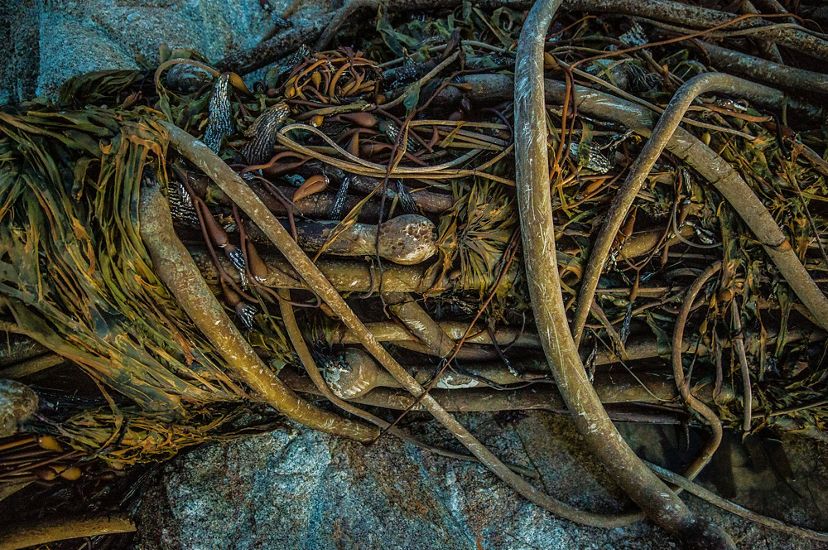
But in the past decade more than 90% of the global sunflower sea star population has been wiped out by a gruesome affliction known as sea star wasting syndrome, a disease that breaks down the star’s body and eventually reduces its many limbs to mush.
As billions of sunflower sea stars have wasted away, native purple sea urchin populations have exploded in nearshore waters. These ravenous kelp consumers have sustained more than a 10,000% increase in population along the North Coast since 2014. And without a top predator to keep them in check, they do what any animal would: They eat until there’s nothing left. “Purple urchins are transitioning these incredible ecosystems to what look like big parking lots on the seafloor,” says Eddy.
But when they’ve finished mowing down a patch of kelp, the urchin often do not move on. Instead, they settle in the empty space left behind in a torpor-like state, knitting their bodies together like a carpet of spiny zombie balls. Congregations of the purple predators can persist for decades in these “urchin barrens,” reanimating only when nutrients become available. Until then, they lie in wait, a passive threat, like Lego pieces strewn across a living room floor.
The Insatiable Kelp Consumer
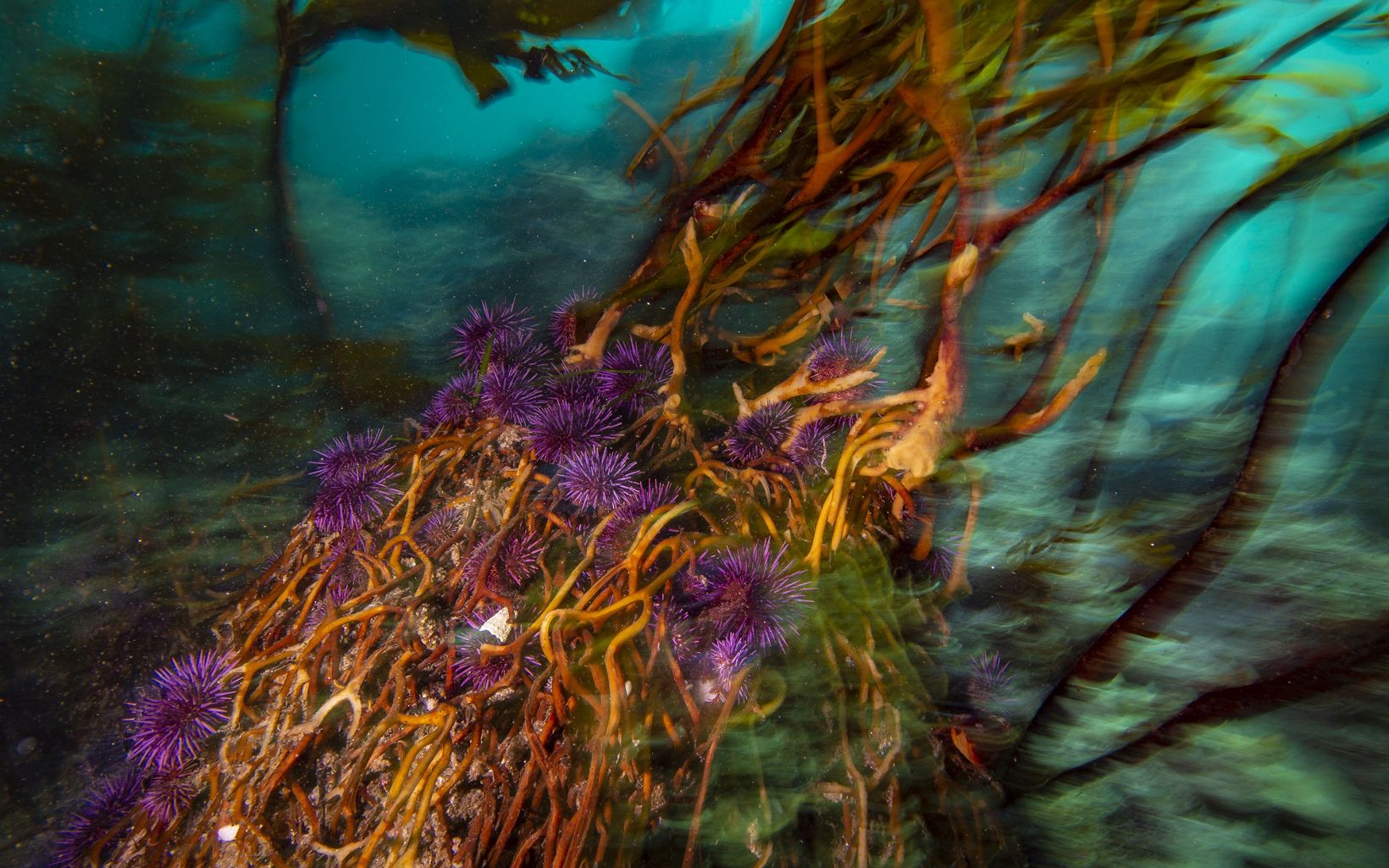
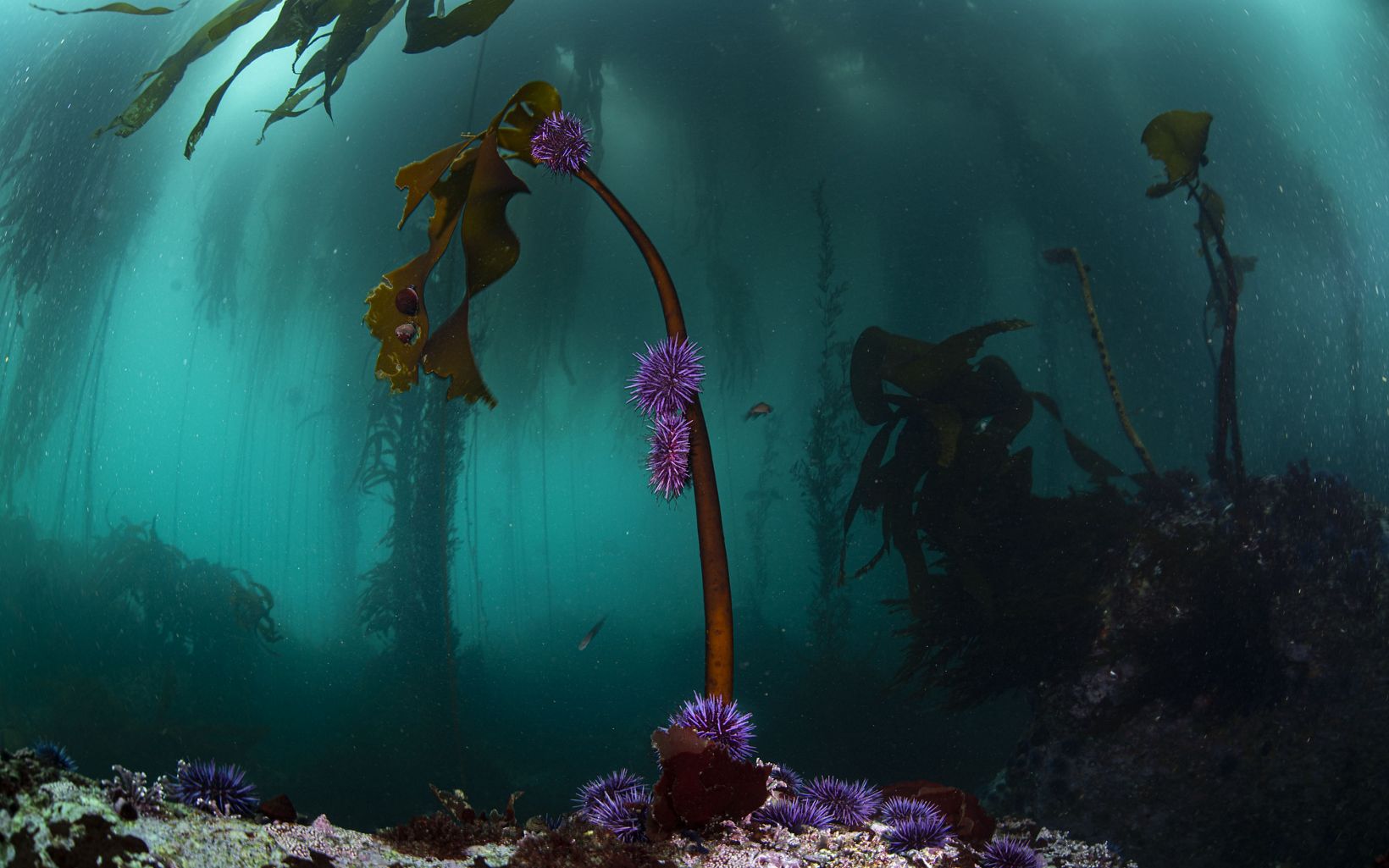
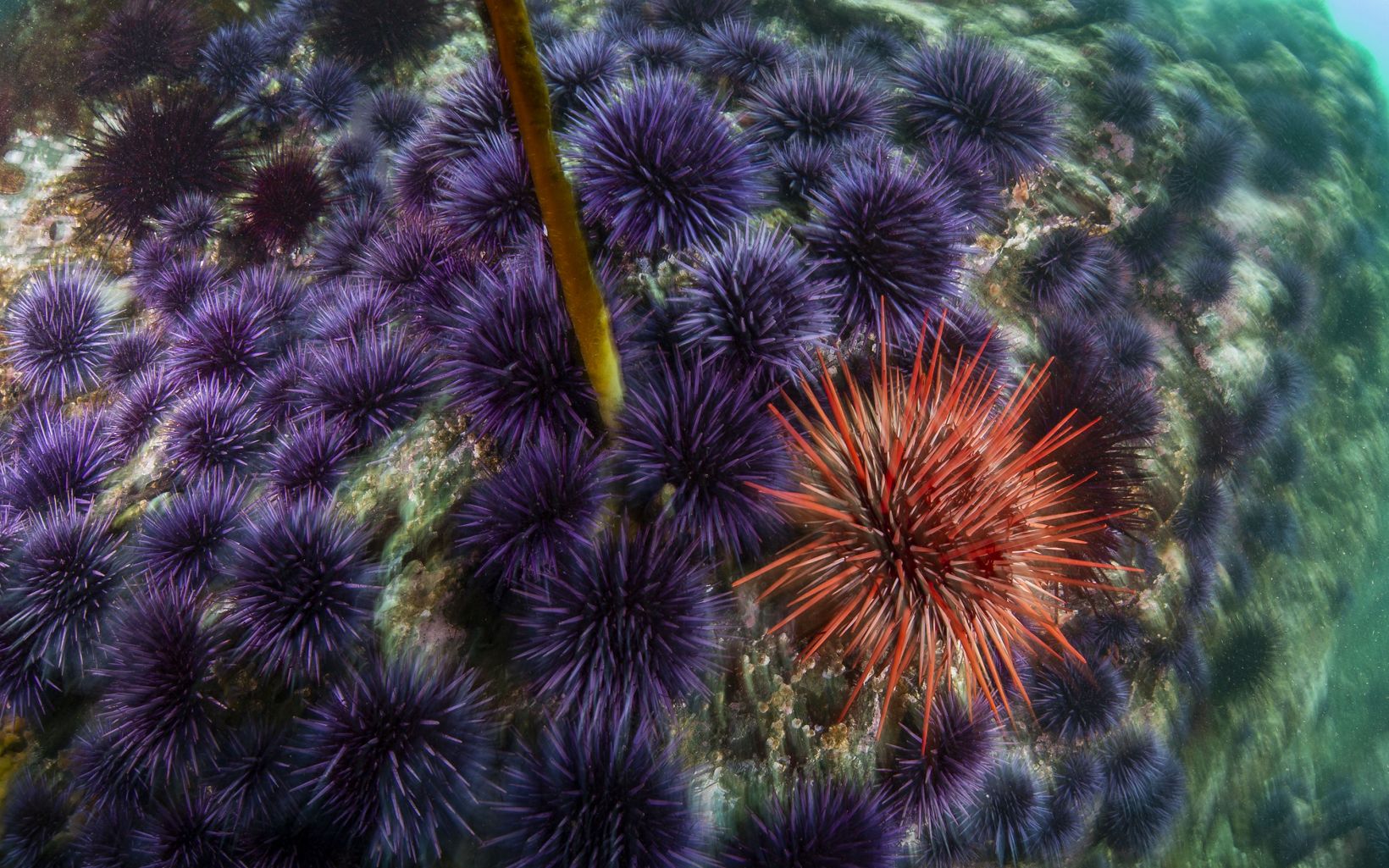
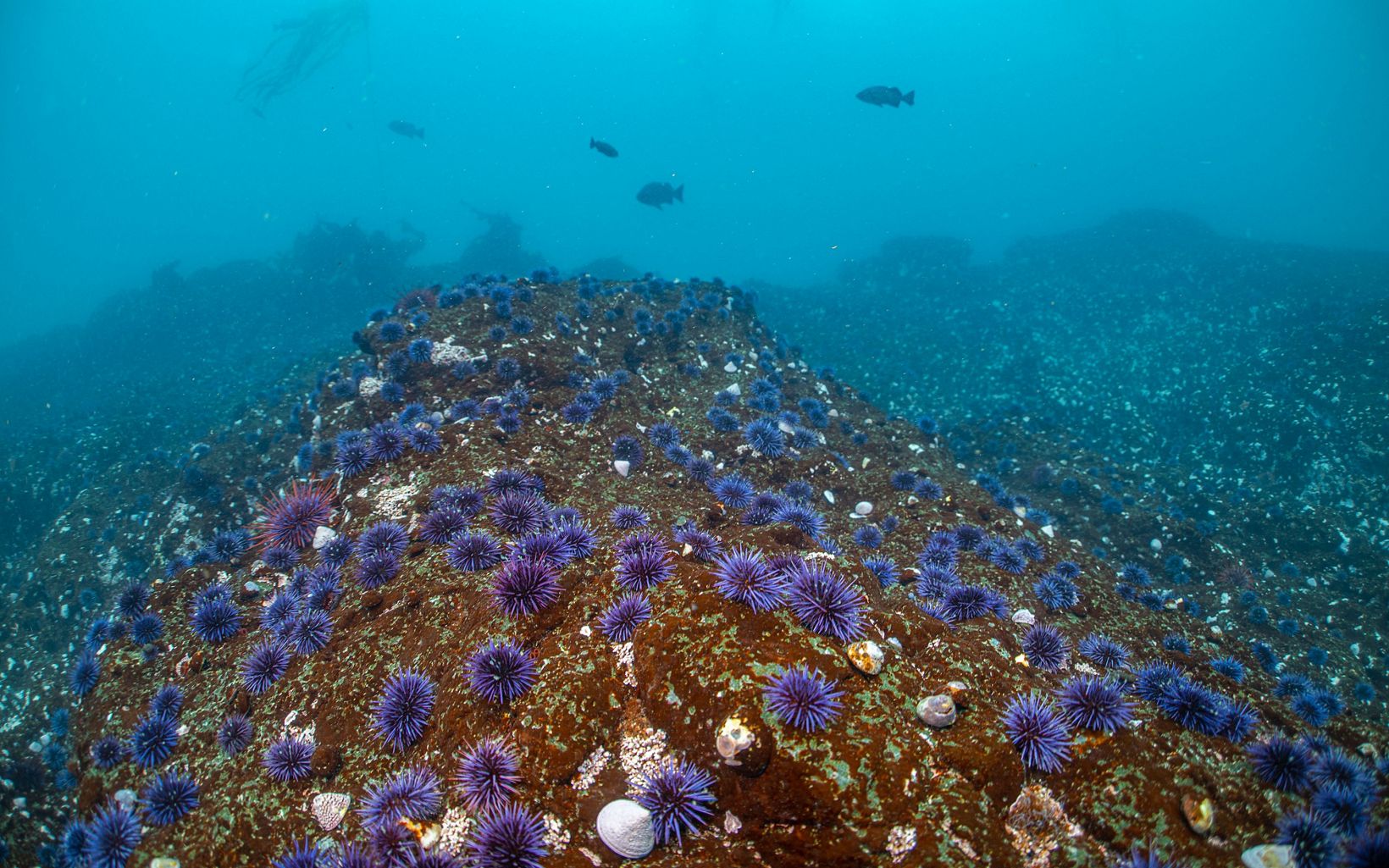




Urchins Everywhere
The first step toward re-creating habitable conditions for kelp in Northern California is ensuring that future forests won’t be razed by the millions of starving urchins currently in residence. So in Mendocino County’s city of Fort Bragg, scientists are focused on trying to do the job of the missing sunflower sea star—getting the purple urchin population under control.
Tristin McHugh, kelp project director for TNC in California, is leading the effort in partnership with the California Department of Fish and Wildlife, other local nongovernmental organizations and Grant Downie, a 30-something, second-generation commercial urchin diver. McHugh and Downie are experimenting with urchin trapping, a safer method than harvesting by hand on scuba dives, which is time-consuming and risky. “The ocean is so gnarly in Northern California,” says McHugh. “It’s cold, remote, and the surface and bottom conditions are often treacherous.”
So far, the traps—flat, hula hoop-sized disks made of mesh and baited with bits of kelp—are proving effective. “We’re actually removing urchins and creating a lower density,” says Downie.
Meanwhile, McHugh and Downie are brainstorming ideas for what to do with this bumper crop of undead urchins. About the size of a golf ball, purple urchins have always been a hard commercial sell because they contain so little uni—the edible gonad prized by sushi and seafood restaurants for its briny flavor and creamy texture—compared with their much-larger relative, the red urchin.
On a dock at Fort Bragg’s Noyo Harbor, McHugh demonstrates the problem. She’s peering into an enormous crate filled with purple urchins in varying states of decay. The smell is pungent. McHugh has a knife. She plucks one of the spiky orbs from the pile, places it on an overturned bucket and hacks it in half. Inside is a mostly empty cavity.
Dining on that would be as satisfying as biting into a Styrofoam cup, but it made them wonder what steps could be taken to make these urchins more marketable—a concept known as urchin ranching. Inspired by land-based aquaculture, the practice involves collecting harvested urchins and continuing to grow them in tanks, feeding them to fatten up their insides with the aim of selling them to restaurants at a competitive market price. To drum up interest among chefs, buyers for restaurants and the average consumer, Downie sometimes hands out “uni shooters”—compostable shot glasses holding a splash of ginger beer, ponzu, hot sauce and lime topped with uni from healthy urchins he has cleaned himself—on the docks.
Eddy says trapping, ranching and building a market for this overpopulated species is a win-win-win. “We’re removing these pesky purple urchins from the sea floor, making room for new kelp to grow and creating opportunities for fishermen who have seen their livelihoods vanishing right along with the kelp.”

© Muti

© Muti

© Muti

© Muti
Farming the Future
Farther up the coast, near the Victorian port city of Eureka, TNC is supporting an experimental bull kelp farm in consultation with partners such as GreenWave, an ocean-farming nonprofit, to test whether farm-grown bull kelp could someday help restore depleted kelp beds along the North Coast. The farm is installed in Humboldt Bay and, from land, doesn’t look like much. But aboard a small fishing boat, the fledgling operation comes into view: Long rows of thick, brown rope float on the water’s surface, held in place with anchors and marked for easy spotting with orange buoys.
Algae expert Torre Polizzi is here with Kalani Ortiz, a graduate student in fisheries biology who is growing bull kelp from seed as part of her master’s project at Cal Poly Humboldt. Polizzi leans over the edge of the boat, plunges his arm into the sky-blue water and hoists out a line. It’s heavy with golden brown bull kelp, which hangs from the rope in long, slippery folds. The co-founder of a regenerative ocean-farming start-up called Sunken Seaweed, Polizzi holds up a blade and points to a section that’s darker than the rest. “That’s the reproductive tissue,” he says. Then he points to another blade, this one with a rectangular-shaped hole in it that, Polizzi says, indicates that the plant has sent its spores into the sea.
This propagation is good news for a project that could be growing the next generation of California’s kelp forests. Polizzi and Ortiz are working with Eddy as part of TNC’s long-term plan to plant kelp in the wild areas where it has disappeared. To that end, TNC is creating a bull kelp seed bank and conducting research to identify the genetic and environmental factors that make certain kelp beds more resilient. At the moment, says Eddy, the plan is to continue cultivating kelp in Humboldt Bay—and eventually in Mendocino—and then plant spores on reefs in designated restoration sites in the wild. But before scientists can reforest the shallows with farmed kelp, they must invest in the muscle to protect it.
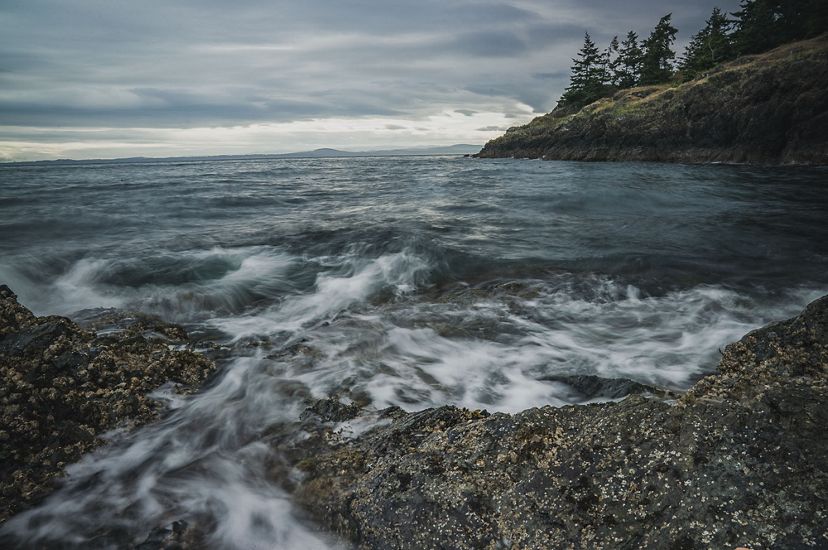
Operation Death Star
Like any high-stakes mission, the captive breeding project designed to recover the sunflower sea star had to have a name. “We used to call it ‘Death Star,’” says Eddy, chuckling at the Star Wars reference that captures the sea star’s predatory nature but also its desperate circumstances. In 2020, a study by TNC, the University of Oregon and more than 60 partner institutions prompted the International Union for Conservation of Nature to list the sunflower sea star as critically endangered. The sea star has been so decimated in California waters that TNC had to headquarter the breeding program two states away in a wet lab at Friday Harbor on Washington state’s San Juan Island.
Here, University of Washington marine biologist Jason Hodin, whom Eddy describes as “everyone’s favorite biology teacher,” is spawning and rearing sunflower sea stars—lots of them—with no road map.
Bringing Back the Sunflower Sea Star
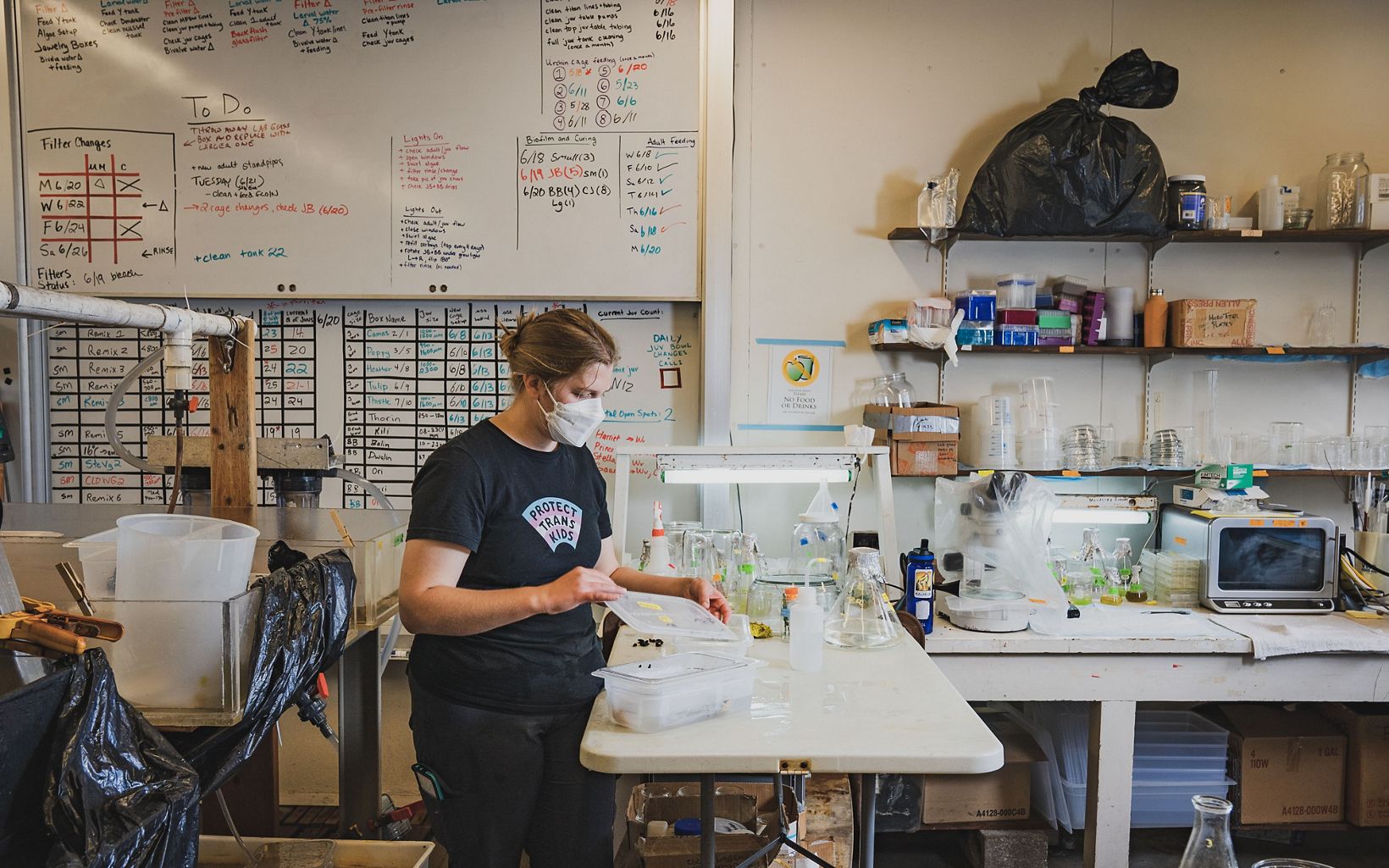
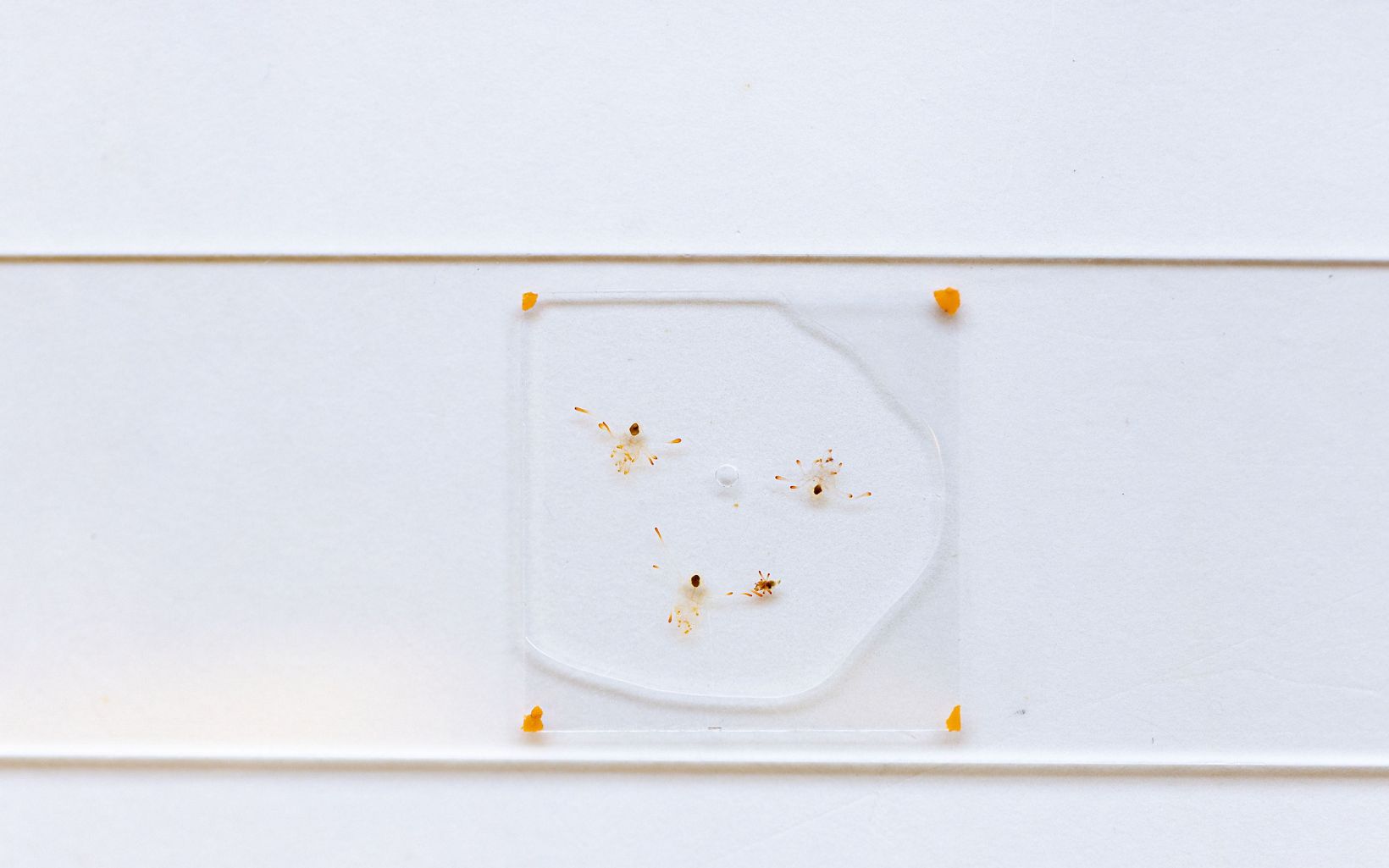
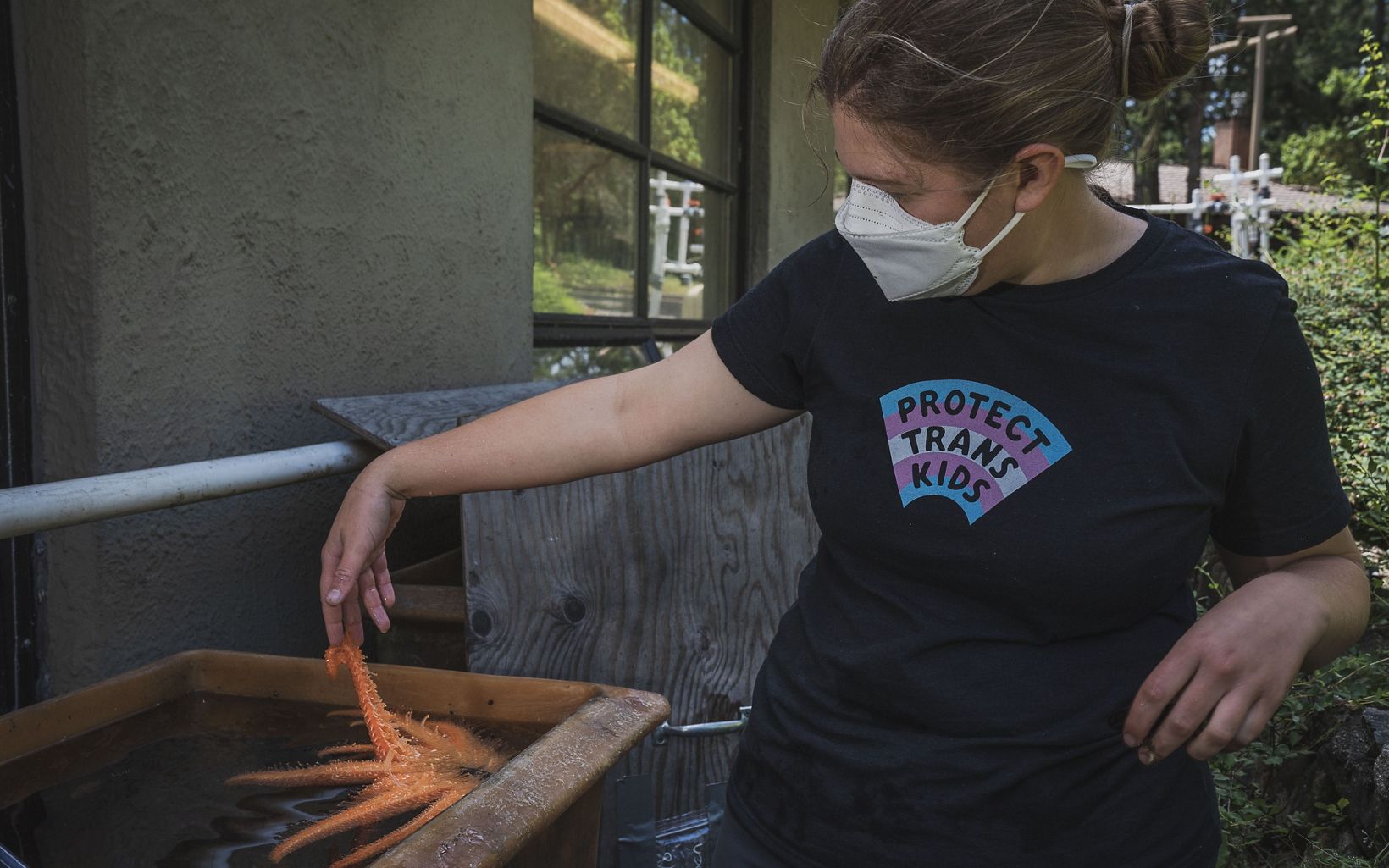



The largest of his sea stars live outside the lab in a row of fish tanks lined up under an eave. Hodin lifts one of the tank covers to reveal its inhabitants. “That’s Olga,” he says, pointing to one. “And Prospero is on the bottom.”
The dinner-plate-sized, amethyst and saffron-colored sea stars are intertwined with each other in a kind of technicolor pileup. “They’re very gregarious,” says Hodin, who wonders if this mingling behavior, which is not typical of most sea stars, has something to do with the transmission of sea star wasting disease. Since 2019 he’s been breeding and raising sunflower sea stars to learn about their reproduction and life cycle—especially the critical juvenile stage, after which point the survival rate increases—with the goal of introducing them into kelp strongholds in the wild.
But breeding the marine invertebrate in captivity requires more than slow jams and mood lighting—especially for a species as enigmatic as the sunflower star. “For such a key seafloor predator, so much basic information was simply unknown,” says Hodin, including when it bred, how fast it grew and even how to age wild-caught adults.
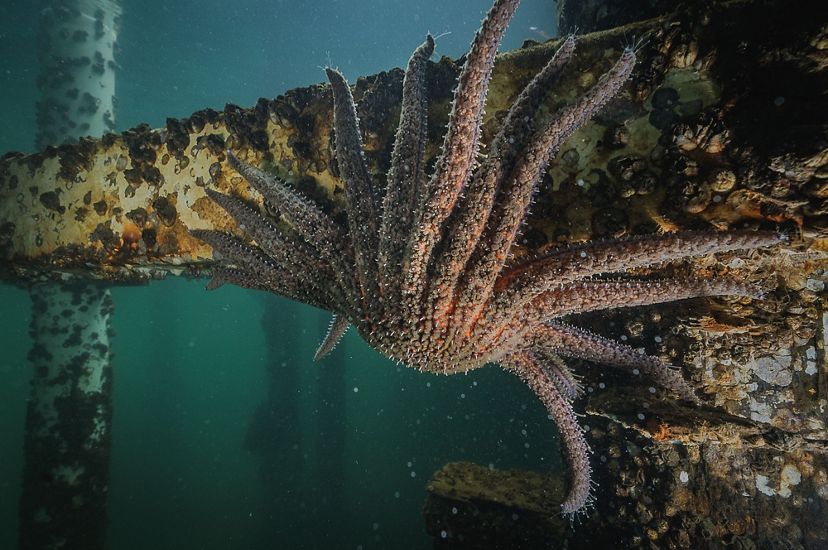
Judging by the gently bubbling tanks full of sunflower sea star larvae and juveniles that he’s successfully bred and raised in his lab, Hodin’s team is doing something right. To date, 16 adults have produced more than a hundred surviving offspring, which are now between the ages of 1 and 3 years old. The 3-year-olds are now sexually mature, so Hodin will soon attempt to breed a second generation—“an important milestone for any captive breeding program,” he says. And possibly, the last hope for their kind.
Yet before Hodin can release his sea stars into the wild, he needs a better understanding of what wiped them out in the first place. Sea star wasting syndrome—symptoms of which progress rapidly and include lesions, tissue decay and body fragmentation—is not well understood, and Hodin’s research is critical to filling knowledge gaps.
Final Destination
As kelp decline accelerates around the world—particularly in Chile, Tasmania and Baja California—its decline is accelerating locally, too: A recent peer-reviewed study shows that from 2014 to 2021, the kelp canopy around the Monterey Peninsula declined by approximately 82% relative to the historical average for the region. Advancing the pace of kelp restoration and recovering the forest’s keystone species have never been more important.
Back on the bluffs in Mendocino, the wind has picked up and the ocean is choppy. On the water, a brownish patch bobs into view in the distance. A kelp forest? It’s too far away to know for sure, but it calls to mind something Eddy said, about why this restoration work, while challenging, is so encouraging. “The nature of the system is resilient,” she says. Kelp is one of the most productive and fastest-growing organisms on the planet—bull kelp can sprout up to 2 feet per day. Those redwoods off in the distance take decades to reach maturity, but with bull kelp, says Eddy, scientists can understand in a relatively short window what successful growth looks like. “There’s a lot of hope around that.”
